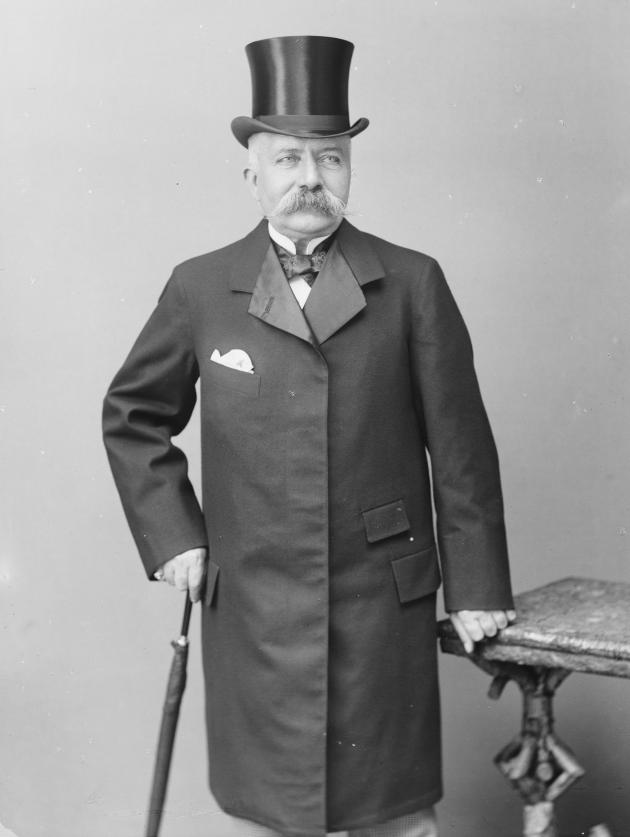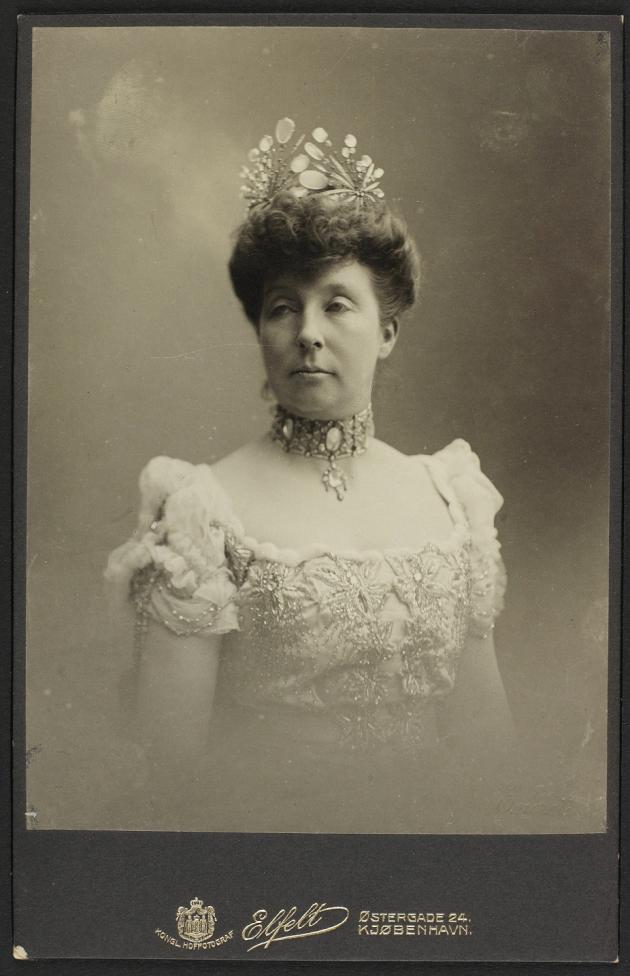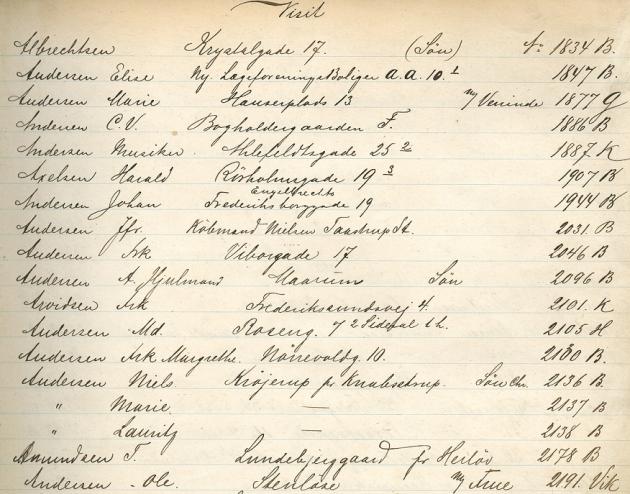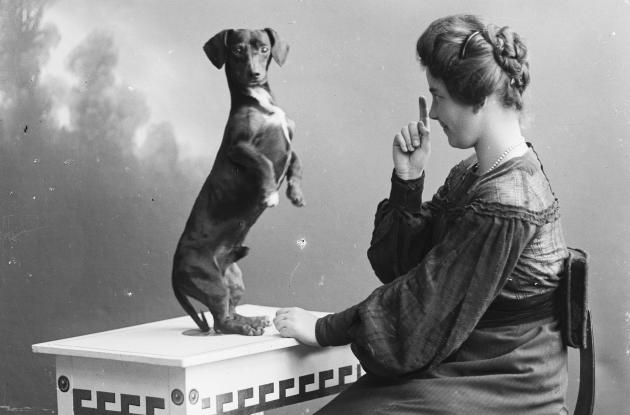17,000 photos come out of the "Transcriptorium"
Behind an office door at the library, its employees are teaching computers to read Danish handwriting, which is why you can now search through 17,000 calling cards.
On the fourth floor of the Black Diamond, there is a completely ordinary office door in a completely ordinary office corridor, but above the door hangs a sign with the text "Transcriptorium", and behind the door a group of students who have been the vanguard of a high-tech piece of library work are working. This work now results in 17,000 calling card photographs from the Peter Elfelt collection becoming available to the Royal Danish Library's users.
We will come back to what goes on in the "Transcriptorium", but what are calling card photographs really? According to senior researcher at the library Mette Kia Krabbe Meyer, who is responsible for the library's collection of prints and photographs:
The digitisation of the Elfelt collection
In 2020, the Royal Danish Library started its digitisation of "Peter Elfelt's negative collection from 1890-1931". Now the first part of the collection is in our Digital Collections. It concerns 17,000 calling card photographs, small pictures that were put on cardboard plates and which were shared at the end of the 19th century, almost like pictures are on social media today.
The social media of the time
- The calling card photographs were, as the name suggests, used to hand out when you called on people. There was a bowl in the reception room in nice homes, where you could put your photograph. There you could also look at other people's photos, just as you can see photos of friends' friends on social media today, she explains.
Peter Elfelt was a portrait photographer from Copenhagen who made a business out of, among other things, calling card photographs. He opened his studio at Købmagergade 64 in 1893 and quickly became popular.

Photo: Peter Elfelt
- Everyone who had something to do with music had calling card photographs taken by Peter Elfelt, even if they were perhaps no more than a small piccolo flute player, they simply had to have one. But for us, that means that the protocols, which are often our only way of knowing who the photographs represent, are very long - and they are handwritten on top of that, and this is where the students and I can help, adds Jakob K. Meile, project manager at the Transcript project.
Peter Elfelt kept very careful records of his assignments. All negatives from his collection are therefore entered into protocols along with information about who commissioned the image and what it represents. It could be, for example, "Mrs. Andersen with dog" or "Merchant Hansen, Serious". It is these protocols that must become metadata, so that users can get a relevant search result in the future.
This is how protocols become searchable data
- It is usually a lot of work to enter handwritten protocols into our databases. Our task was to try to automate that process by teaching a computer to read the handwriting in the protocols, says Jakob K. Meile; at the same time, it was important for us to test the technology on structured data, such as those found in a protocol, because many of our other collections are registered in handwritten protocols or registrants, such as Peter Elfelt's calling card photographs.

Photo: Peter Elfelt
Since 2018, the library has been experimenting with the programme Transkribus, which enables computers to decipher scanned, handwritten letters, even in italics, using HTR (Handwritten Text Recognition) technology. The technology lies within the field of artificial intelligence (AI), so in order to be able to read Danish handwriting, the software must first be "trained" for it, and this has been done by a large number of student assistants in the office with the strange sign. But the task was a little bigger than expected.
- We have become much smarter about what technologies like Transkribus can help us with, and one thing we have had to admit is that it has required painstaking work from our students to clean the automatically generated text from the protocols. This is due, among other things, to the fact that a handwritten protocol may not be quite as structured as a computer would like. In several places, the recorder has added a note above a name or in the margin, and then the computer cannot find out where the information belongs, explains Jakob K. Meile.
What processes are needed to digitise the photographs?
Getting the motifs from the negatives out on the web takes time. The first step is to retrieve them from the storage facilities, where they are kept cool to prevent decomposition. The majority are fragile glass negatives arranged by size, but there are also some celluloid negatives. You have to be particularly careful here, because they may have been treated with nitrate, which is highly flammable. The negatives are taken to the Digitisation Department, where they are photographed and edited digitally. In parallel, work is being done with the metadata, so that the images can be searched for by users once they have been published.
The students get a bigger role
The students therefore got a bigger role in the project than initially planned by correcting the HTR-generated data files. But that work has also yielded a significant side benefit.
- HTR works optimally when the computer simply needs to recognise the handwriting it has been trained to use, but it is obviously not as satisfactory as if it could read other, similar handwriting. We are therefore trying to create a more robust 'model'. We do this by feeding Transkribus with as many different manuscripts as possible, says Jakob K. Meile.
The project with Elfelt's protocols pushes for a development where in the future we will see computers being even better at recognising Danish handwriting. And it will be of great importance for making the library's collections available. But why was the students' office actually called the Transcriptorium?
- In medieval monasteries, the monks' writing room was called "scriptorium". It was here that they wrote manuscripts, and it required great precision and patience, just as our students must have when they work with Transkribus, and it was perhaps also a little boring at times, so the name came easy, laughs Jakob K. Miles.

Photo: Det Kgl. Bibliotek
